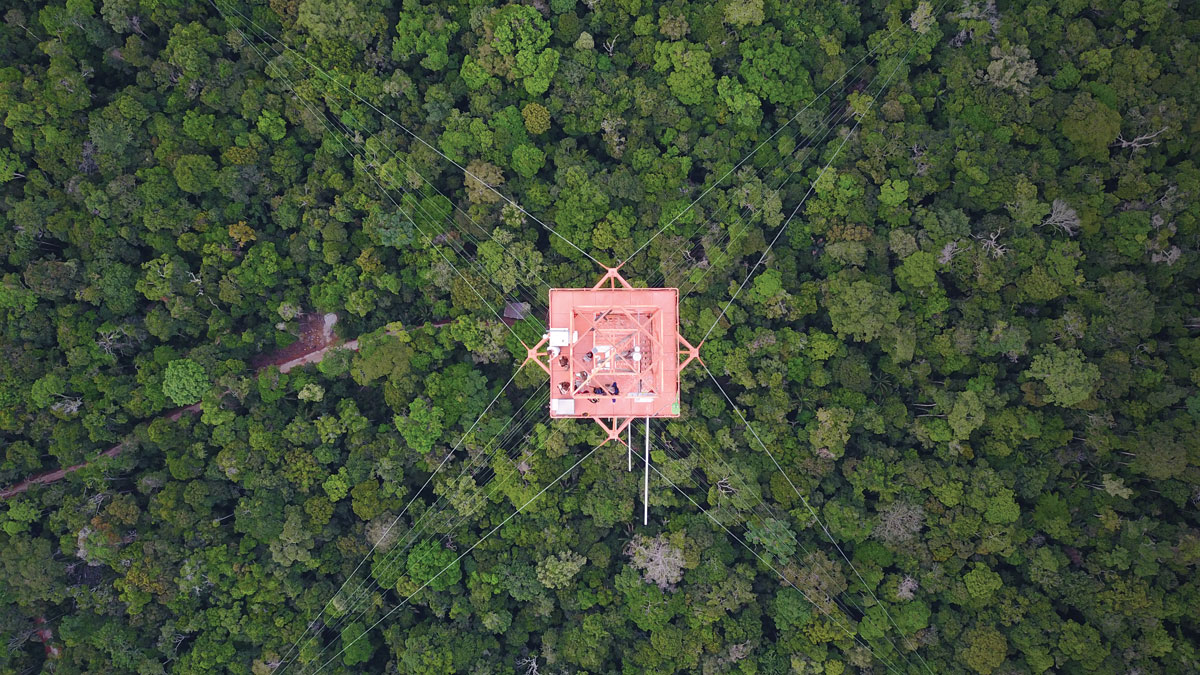The Amazon Tall Tower Observatory (ATTO) is exactly what it sounds like: a very tall tower, dotted with sensors, jutting above the canopy of the largest rain forest on Earth. To reach the site, researchers drive several hours north from Manaus (the capital of Brazil’s state of Amazonas), then turn down a dirt road. Hours later, they clamber into a boat and head down the Uatumã River to reach another muddy road taking them deeper into the jungle. At the end sits ATTO, the tallest structure in South America, an orange-and-white spire 1 meter higher than the Eiffel Tower.
Why do researchers make the trek? For many, it’s to study dust—not the fluffy stuff that collects under furniture, but the lightweight minerals swept up from the Sahara desert more than 5,000 kilometers away in North Africa. Each grain of dust carries key nutrients like phosphorus and iron, and if the winds are right, those grains help fertilize the Amazon basin. The same material that gives the Sahara its dull beige tone in satellite images is the reason the Amazon stays so brilliantly green.
The phenomenon relies on two conditions: extremely dry soils and very strong winds. Research indicates that these reliable conditions may change: Models show that North Africa is destined to get wetter, and a warming climate will shift existing wind patterns. Fires are also expected to change, further complicating the outlook for dust transport.
Nutrients in tiny specks of dust may sound like minor contributions to the massive, complex ecosystems of the Amazon, but their effects are major.
“Dust,” said Cassandra Gaston, an atmospheric chemist at the University of Miami, “has always been a big player in the climate system.”
Aerosols at Altitude
Dust falls into the category of aerosols, small particles suspended in air. Individually, aerosols are rarely wider than a human hair. Collectively, aerosol clouds (including clouds of smoke) can alter weather patterns and be visible from space.
In 2006, NASA launched a specific mission to focus on aerosols. Called CALIPSO (Cloud-Aerosol Lidar and Infrared Pathfinder Satellite Observation), the satellite records aerosols in three dimensions and maps the movement of aerosol clouds. Although ground research sites like ATTO can study aerosol chemistry at a specific spot, CALIPSO provides an overhead understanding of aerosol (including dust) transport.

“Satellites can provide routine sampling on a global scale,” said Hongbin Yu, a research physical scientist with the Climate and Radiation Laboratory at NASA Goddard Space Flight Center in Greenbelt, Md. With a global perspective, scientists can see where the world’s dust originates. It’s commonly thought that Africa contributes more than half of global dust to the atmosphere, he said.
With the benefit of spatial and temporal coverage, the satellite also helps NASA pinpoint the total mass of African dust leaving the continent. Using lidar, CALIPSO builds vertical dust maps depicting slices of Earth’s atmosphere; each map looks like a grimy window showing the concentration of African dust at different altitudes.
Stronger winds send dust higher in the atmosphere, which can affect climate. Dust scattered in the upper atmosphere will absorb sunlight and create an elevated heat source, explained Yan Yu, an assistant professor in the Department of Atmospheric and Oceanic Sciences at Peking University. If there’s enough dust in the upper atmosphere, it can reduce the usual temperature gradient that affects wind patterns and precipitation, she said.
Points of Origin
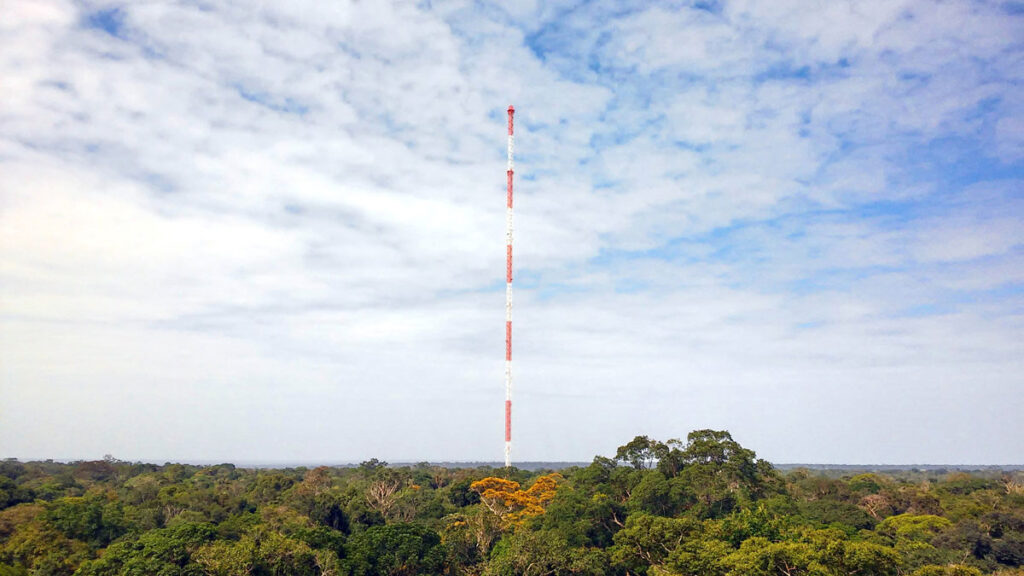
Even with satellites, researchers still aren’t sure exactly where in the vast Sahara the dust is coming from. “It’s very hard to keep track of these dust particles as they’re being blown across the desert,” Gaston noted. The source matters, though, because nutrient concentrations may change from place to place.
Originally, researchers hypothesized that the Bodélé Depression, a massive former lake bed in Chad, was the main source of dust delivered to the Amazon. “That is very natural thinking, because the Bodélé Depression is the leading source [of dust emissions] globally,” explained Yan Yu. The depression is located between two mountain ranges, which generate strong southwestward winds. But those winds also send dust directly into the Intertropical Convergence Zone (ITCZ), a seasonal rain belt. Rainstorms can knock dust from its delicate trajectory across the Atlantic.
A second likely source is El Djouf, a desert straddling the border between Mauritania and Mali. The site is geographically closer to the Amazon, making El Djouf dust more likely to survive in the atmosphere en route, explained Yan Yu.
Regardless of the source, no specific location in Africa actually contributes all that much dust to the Amazon. That’s because once suspended, dust particles behave like little paratroopers slowly sinking back to Earth. Most of the dust lands in the Atlantic Ocean, where its iron nutrients fuel the growth of plankton and support marine food webs. Only dust particles reaching high altitudes over Africa have the potential to reach the Amazon.
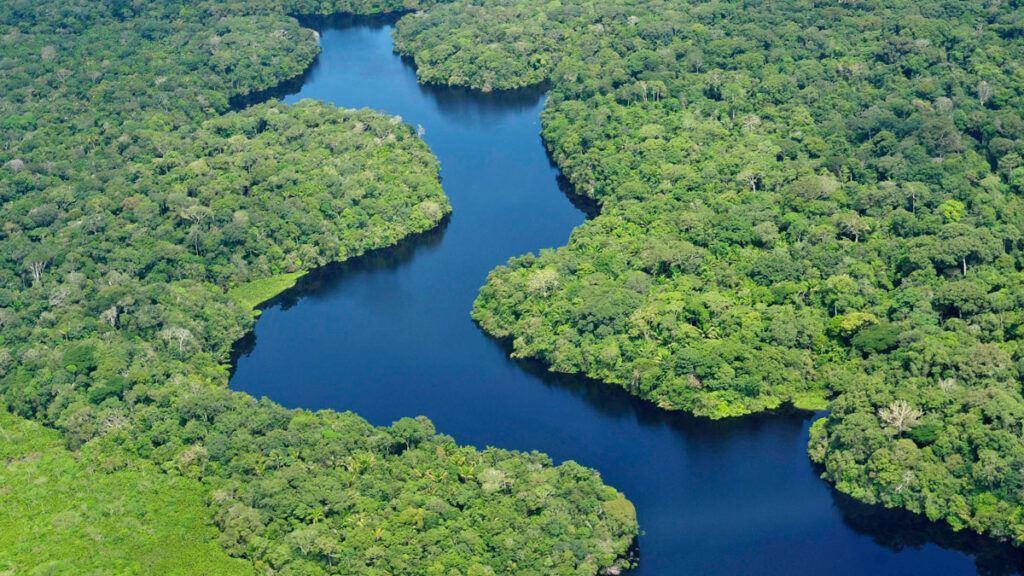
In 2015, NASA reported that trade winds carry 165 million metric tons of dust up and away from northern Africa each year. Only an estimated 25.1 million metric tons end up in the Amazon basin. “Really, a small fraction of dust can reach the Amazon,” said Hongbin Yu.
Every particle that reaches the basin delivers a crucial jolt of nutrients, though. NASA estimates that roughly 21,770 metric tons of phosphorus from Africa arrive in the Amazon each year, spurring growth in a region where 90% of soils are depleted of phosphorus, a key element for energy transfer in plants.
Three-Station Welcoming Committee
After its journey over the Atlantic Ocean, the arriving dust is welcomed to the Americas by a trio of prominent research stations. In the Caribbean, the University of Miami’s Barbados Atmospheric Chemistry Observatory has collected data since 1966. ATTO, a Brazilian-German partnership, gathers aerosol information from the heart of the Amazon. A newer site in Cayenne, French Guiana, called ATMO Guyane, monitors air quality from the edge of the rain forest; the local health department collects air quality data and shares its filters and findings with researchers.
“It’s really nice to have the three research stations, because they’re all impacted by African dust in different ways,” said Anne Barkley, a Ph.D. student at the University of Miami.
Barkley’s research centers on data from ATMO Guyane and shows that a significant portion of phosphorus arriving in the Amazon comes from African dust. The ITCZ’s consistent delivery system allows the Amazon to be more productive than it otherwise would be, she noted.
In the highly productive Amazon, most of the resident phosphorus is locked away in living trees and other plants. The phosphorus will return to the soil only when the plant decays. However, it may not stay there long, thanks to the forest’s namesake rain. “Soil nutrition gets washed out frequently in the Amazon,” explained Yan Yu.
The phosphorus recycled during plant decay is “orders of magnitude more important” than African dust to the Amazon, noted Barkley, but findings from ATTO and ATMO Guyane show that African dust still plays an important role in the rain forest. Comparing observations among the three stations allows researchers to determine what’s arriving, where it’s coming from, and how the transport process is changing.
Earth, Wind, and Fire
Wetter conditions in the Sahara may reduce the amount of dust ready for transport. More rain can produce more vegetation in the region, and “any increase in vegetation will decrease the amount of dust transported,” explained Barkley. In fact, a wet year in the Sahara can reduce the amount of available dust by up to an estimated 29%.
“The latest IPCC report has higher confidence that there will be an increase in rain over the Saharan desert.…Any increase in vegetation will decrease the amount of dust transported.”
The central Sahara has slowly grown greener over the past 15 years. Increasing temperatures associated with climate change have led to stronger evaporation patterns, and the resulting condensation rains down onto dry land. The trend is likely to continue: “The latest IPCC [Intergovernmental Panel on Climate Change] report has higher confidence that there will be an increase in rain over the Saharan desert,” said Barkley.
Just as climate change brings wetter conditions to dusty North Africa, it will also likely contribute to increased numbers of forest fires throughout the rest of the continent. Such fires introduce another key aerosol for the Amazon: smoke.
Like dust, smoke carries crucial nutrients across the Atlantic. But because of their relative buoyancy and smaller size, smoke aerosols typically travel farther into the Amazon interior.

There are geochemical differences between dust and smoke as well. Because dust has more mass, it holds more nutrients. But not all nutrients are created equal. The phosphorus in dust is generally held in the mineral apatite, which doesn’t readily dissolve. When dust reaches the Amazon, only an estimated 5% of its phosphorus is immediately available for plants to absorb, explained Barkley. Phosphorus in smoke, on the other hand, is more than twice as soluble; like a car at a junkyard being dismantled, the component parts of smoke are more easily separated and shared.
“Even though smoke has fewer nutrients, it tends to have a higher impact because it’s immediately accessible to plants,” said Gaston.
Smoke Is Always in Season
Research at ATTO shows that the arrival of dust and smoke varies seasonally. “It’s not constant, but it comes in plumes, in pulses,” explained Bruna Holanda, a postdoctoral researcher at the Max Planck Institute for Chemistry, which co-manages ATTO.
ATTO’s sensors record the highest mass concentration of aerosols arriving in the central Amazon (around ATTO) from December to March, the rainy season, but the highest number concentration arrives between August and November, during the dry season.
That discrepancy indicates that dust, which has more mass, arrives primarily during the wet season when the ITCZ is aimed at the Amazon. According to Holanda’s research, 90% of smoke reaching ATTO in the wet season comes from the burning of African biomass. (On average, Africa accounts for 70% of the burned land area on Earth.) Even in the dry season, when Amazonian fires are more likely to occur, 60% of smoke at ATTO still comes from Africa. Black carbon—the soot of burned plants—peaks at ATTO during this period.
“Deforestation doesn’t just change the environment where you lose the vegetation.” It causes “changes all across the atmosphere.”
It’s important to note that the Amazon itself contributes smoke to the region, researchers say. Burns are a common method of deforestation along the rain forest perimeter. ATTO can differentiate between local and long-range aerosols, however, and researchers found that both smoke and dust coming from Africa are more chemically diverse than their Amazonian equivalents.
Regardless of origin, an increase in smoke is concerning to researchers. “Smoke makes it harder for water vapor and aerosols to combine and form clouds,” said Holanda. That can delay precipitation, one of the defining characteristics of the Amazon rain forest.
“Deforestation doesn’t just change the environment where you lose the vegetation,” Holanda said. It causes “changes all across the atmosphere.”
Dust in the Wind
In addition to influencing the increase in smoke and reduction in dust, climate change will also affect the other half of the aerosol transport equation: wind. Changing temperatures are expected to shift wind patterns, which could reroute the whole transatlantic transport process.
Dust can reach the Amazon only with help from a group of interlocking atmospheric systems. First, high winds must pry dust loose from the soil, then shoot it skyward on an atmospheric elevator. The African easterly jet, which cruises several kilometers above North Africa, is the first leg of the intercontinental journey. The jet is influenced by the temperature difference between the hot desert interior and the cooler coast along the Gulf of Guinea.
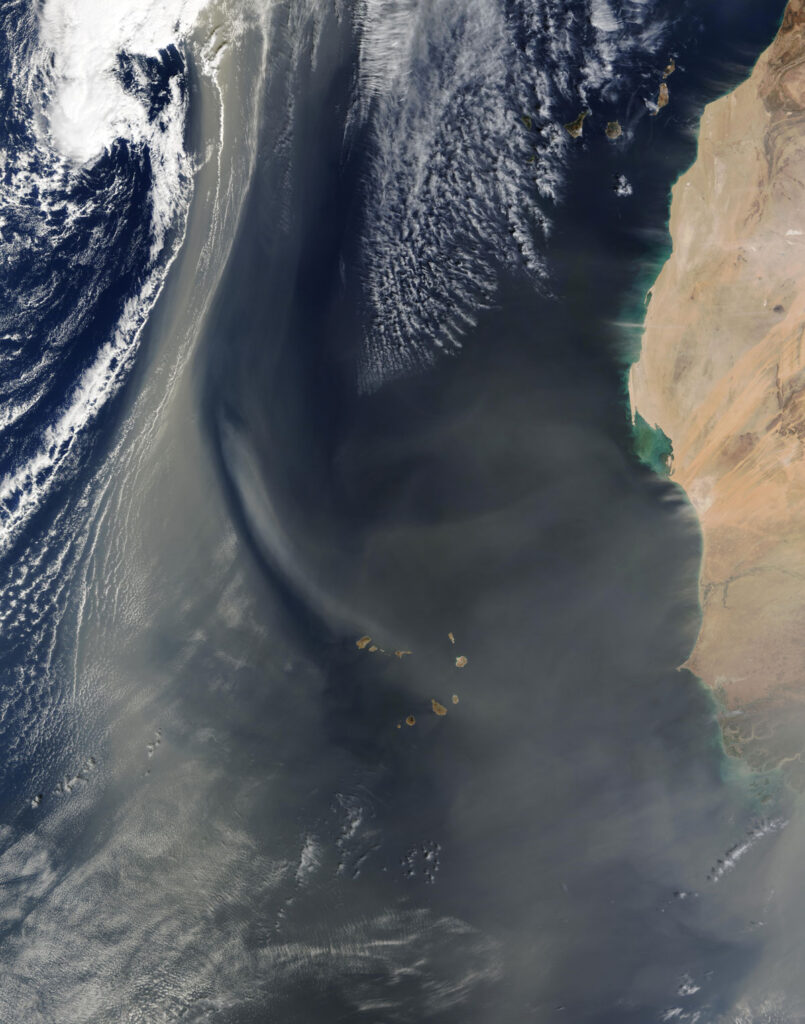
“A stronger temperature gradient usually results in intensified African easterly jets,” explained Bing Pu, an assistant professor of geography and atmospheric sciences at the University of Kansas. High temperatures over North Africa can contribute to an anomalously strong jet. The so-called Godzilla dust storm of 2020, for example, delivered enough dust—nearly 22 million metric tons—to slash visibility in the Caribbean and trigger air quality warnings as far inland as Oklahoma. The African easterly jet is expected to continue to intensify as the interior of Africa warms relative to the coast, Pu said. “It all favors this westward transport.”
The next step on the journey is the ITCZ, which acts as the Amazon’s streaming service. The jet stream, which flows just north of the equator, connects Africa and South America. It also wobbles with seasonal weather. When the Northern Hemisphere is warmer, from June through August, the ITCZ pushes north and peppers African dust over the Caribbean. When the Southern Hemisphere is warmer, from December to March, the ITCZ shifts back south and sprinkles Saharan dust over the Amazon instead.
The ITCZ is also determined by temperature gradients between the hemispheres. “We find that the difference between Northern Hemisphere and Southern Hemisphere surface temperature has a large impact on dust activities,” Hongbin Yu said. Climate change will likely alter that balance and possibly throttle the strength of the ITCZ.
History of the Holocene
Of course, wind patterns have shifted in the past. Marine sediment cores collected from both sides of the Atlantic demonstrate that the flow of dust is cyclic, with repeated intervals of lower dust deposition. Data from the western edge of the Amazon show that African dust has historically played little role in fertilizing areas farthest from the coast.
Juliana de Sousa Nogueira is a researcher at the Laboratory of Radioecology and Global Changes at Rio de Janeiro State University. (Nogueira is also a researcher at the Department of Forest Ecology at the Czech University of Life Sciences in Prague.) She and her colleagues explored the role of African dust transport in the western Amazon. The researchers took cores from Lake Pata in Brazil, an elevated lake in a relatively pristine pocket of the western Amazon, to look for “the DNA of the dust,” she explained. Back in the lab, they examined isotopes, which “act like a fingerprint for the source,” and backtracked wind trajectories to find likely locations. At Lake Pata, dust from the Andes and even from South Africa appeared to be stronger contributors in the western Amazon during the middle to late Holocene, indicating the role of sources in the Southern Hemisphere.
However, their findings show that since the African Humid Period ended roughly 5,500 years ago, the Saharan dust flux has increased fivefold in the western Amazon. African dust has played an increased role throughout the entire Amazon during the Holocene, said Nogueira, although the eastern regions closest to Africa still see the most benefit. “We can’t take into consideration the Amazon as one thing,” she said. “We have to understand dynamics in different parts of the Amazon.”
Historically, periods of low dust deposition correspond to times when the ITCZ was at its weakest, too slow to scoop up massive amounts of desert dust. However, those intervals are also times when Africa was wetter, like during the African Humid Period. Researchers are unsure whether the lower dust records in sediment cores are a result of a wetter Sahara, a weaker ITCZ, or both. According to current models, however, both systems are predicted to shift back in the direction of generating less dust.
These variations make paleoclimate studies essential if researchers want to understand the evolution of the Amazon, said Nogueira. “The present is really clear because we have satellites, so we have 40 years of history. Forty years is nothing” in context, she said. “We have to always have a broader vision.”
Complicated Next Steps
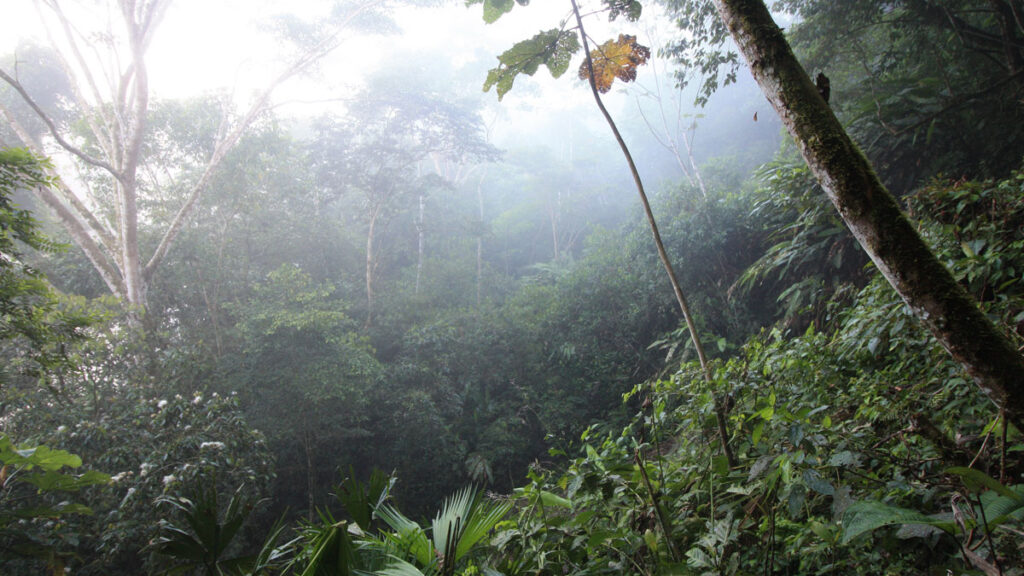
The current uncertainties about dust and smoke transport to the Amazon stem from a lack of data on both sides of the ocean. ATTO’s first observations were in 2010, for example. There’s a lack of comparative measurements coming from the North African desert, added Gaston. That presents future opportunities.
“We welcome collaboration with anyone interested in this research,” said Gaston. “We’d love to work with more people to get a broader sense of what’s happening.”
Dust connects geology, chemistry, and atmospheric science. “It’s all very interconnected,” Barkley said of the research. When smoke is part of the conversation—incorporating arenas like politics, public health, and land management—”it gets really interesting, really fast,” she said.
The issue of aerosol transport is also really complex; dust and smoke have positive effects and negative consequences, depending on whom, what, and where a study focuses. In Africa, for instance, fires are burning the savanna and diminishing air quality. In South America, smoke is helping fuel an ecosystem that can sequester carbon from the atmosphere. The air-clouding carbon and growth-stoking phosphorus are coming from the same fires.
Likewise, climate change will alter the dust transport system in different ways. A wetter desert and weaker jet stream may reduce dust transport, but a hotter climate will increase smoke transport. “The net balance of what gets transported to the Amazon is still definitely up for debate,” Gaston said.
“Dust is controlled by nature. It’s controlled by wind and by rainfall and soil moisture. That’s why I believe dust will become more and more important in the future.”
“We have so many tools, but we need synthetic analysis,” added Yan Yu, ticking off the fields of geochemical analysis, Earth systems modeling, and satellite observations. “We really need to combine all these together to give us the complete picture of dust emissions and dust transport. This is really an Earth system problem. It’s not a single climate or a single ecosystem,” she said.
In addition, as the world reduces its air pollution emissions, Hongbin Yu said, atmospheric dust and smoke may become more relevant to the public. Industrial aerosols like sulfate and organic carbon are declining, thanks to a global effort to reduce air pollution, and that means aerosols like dust and smoke are more likely to cause future air quality issues. The public may think more about dust if events like the 2020 Godzilla storm start increasing in frequency. But unlike air pollution, there’s not much one can do to corral dust.
“Dust is controlled by nature. It’s controlled by wind and by rainfall and soil moisture,” Hongbin Yu said. “That’s why I believe dust will become more and more important in the future.”
Author Information
J. Besl (@J_Besl), Science Writer

